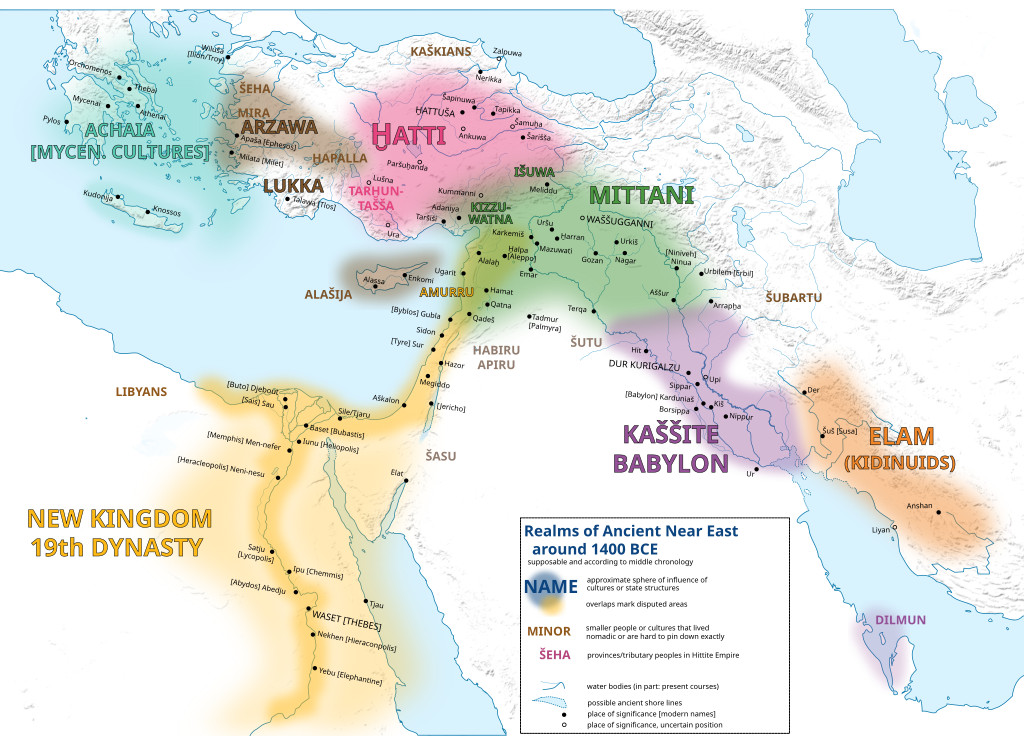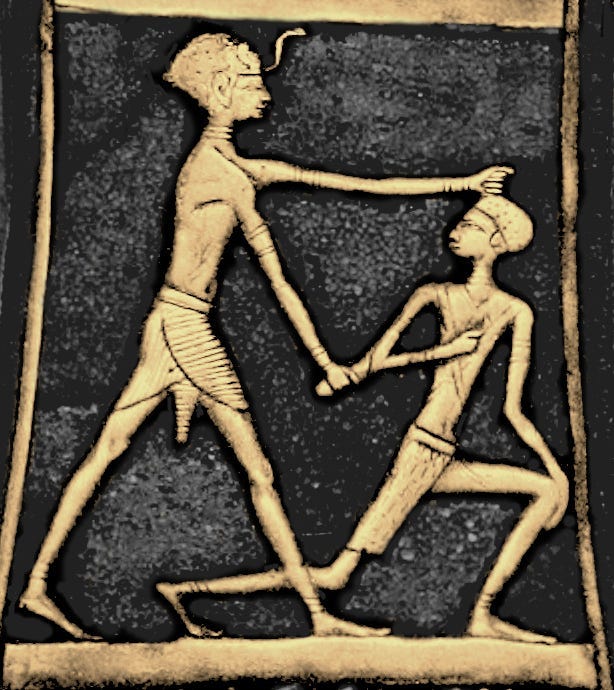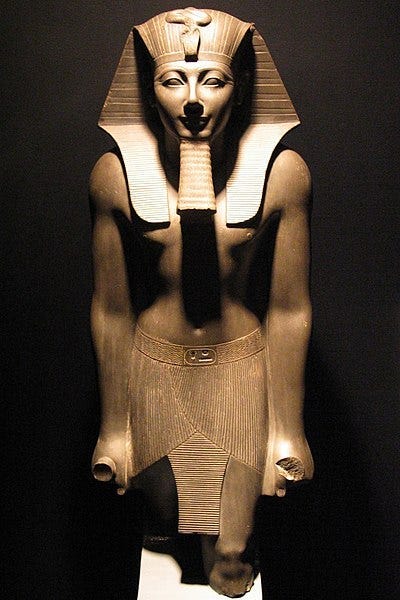Armageddon: History's First Recorded Battle
How a Bronze Age clash at Megiddo shaped our understanding of the biblical apocalypse

War has always been a part of our evolution. From the time people began writing in the Early Bronze Age, around the 4th millennium BC, they documented conflicts. Rulers in Egypt and Mesopotamia recorded their military campaigns and victories. But it wasn’t until 1457 BC that we come across a detailed account of a battle.
At Meggido, where a battle was fought between the Egyptians and the Canaanites, Pharaoh Thutmose III provides us with specifics of his campaign and how events unfolded during the clash. The Egyptian records provide valuable information about troops, the strength of each side, strategies, logistics, and the spoils of victory. This account was the first of its kind in history and set a standard for future battle descriptions.
The Battle of Megiddo became legendary, and its devastating consequences inspired the biblical narrative of Armageddon. The conflict marked a significant turning point in Egyptian history, granting the Pharaohs control over crucial Bronze Age trade routes for the next few centuries and helping to secure the empire’s borders.
Why did the rulers of Egypt and Canaan clash?
We need to explore the sequence of events that led to the development of this legendary conflict. Before we proceed, it's interesting to note that the battle attracted the attention of British General Edmund Allenby during World War I. Three thousand five hundred years after the clash at Megiddo, Allenby studied Thutmose’s tactics to achieve a crucial victory, which we'll also touch upon.
First, let us look at why Egypt and Canaan locked horns.
Reminder: By choosing a paid membership (just $5 a month or $50 annually), you're helping amplify voices that history books too often overlook. Your support means these stories get the attention they deserve.
For a limited time, till September 25th, you will receive 20% off all subscriptions (just $4 per month and $40 per year), for life!
You’ll gain access to tons of members-only content👇
Full-length deep dives into untold stories, like this one: no paywalls, no cuts.
The entire archive of extraordinary tales from the Ice Age to the Fall of the Mongol Empire, the hottest archaeological finds, and the appetizing history of food.
Early access to special editions, be the first to dive in.
Join lively discussions in members-only posts and subscriber chats. Paid members can initiate conversations in the subscriber chat.
Background
Following Egypt’s unification under Pharaoh Narmer in the late 4th millennium BC, Egyptian armies raided Canaan (a kingdom in the Levant, stretching from modern Israel, Lebanon, to Syria).
Canaan was a loose confederation of city-states that prospered because of its strategic location along trade routes. It acted as a land bridge linking Egypt to Mesopotamia and the Anatolian kingdoms. Egypt sought to control these areas to safeguard its commercial interests, given that its merchants had established a strong presence in the Levantine kingdom.
However, the migration of people was not one-way. Canaanites also settled in Egypt. In the 17th century BC, a group called the Hyksos, believed to have originated from Canaan, ousted the Pharaohs and captured Lower Egypt.
Whether the Hyksos invaded Egypt or seized control from inside is hotly debated among historians. Egyptian chroniclers saw them as invaders, but current academics believe they settled in Egypt over several generations.
What is clear is that the Egyptians did not view the Hyksos favorably.
Around 1540 BC, Kamose, the ruler of Upper Egypt, rose against the Hyksos. A fight erupted between native Egyptians and armies loyal to the Hyksos. The successor of Kamose, Ahmose I, conquered the Hyksos-held regions and began Egypt’s New Kingdom era.
During the reign of Thutmose I ( 1506 BC to 1493 BC), the Hyksos had significant influence in the Levant. Thutmose vanquished the Hyksos, giving Egypt control of the area. The Pharaoh’s rule saw military reforms that elevated Egypt to the status of a Near Eastern powerhouse. His son, Thutmose II, continued the offensive in Canaan to protect Egypt’s borders.
Egypt’s grip on Canaan loosened under the rule of Thutmose II’s wife, Hatshepsut (also his sister). Hatshepsut ruled during a prosperous era and preferred diplomatic measures to secure trade routes. Trade with the kingdom of Punt, which is thought to be in modern-day Somalia, enhanced Egypt’s wealth and strengthened the military.
Thutmose III, Thutmose II’s son from another queen, inherited the formidable military. He was anointed king at the tender age of ten. But, because he was so young, Hatshepsut functioned as his regent before crowning herself Pharaoh. As a result, Thutmose III developed a deep resentment towards his stepmother.
Hatshepsut’s pacifist tactics didn’t sit well with Thutmose III, who sought to restore Egypt’s former rulers’ vision of the country. He was a staunch supporter of military campaigns to safeguard Egypt’s borders and commercial interests. But he lacked experience, having spent much of his time under Hatshepsut’s shadow.
The Canaanite kings saw the new Pharaoh’s lack of firsthand engagement in warfare and Egypt’s years of pacifist policies as a sign of weakness.
The Pharaoh’s March
The rulers of Canaan, led by the king of Kadesh, rose against Egypt. The ruler of Megiddo also joined the rebellion. They believed that the new Pharaoh's inexperience made it the perfect time to end Egyptian control in the Levant. The Mitanni, a growing power in the Fertile Crescent, ruled by an Indo-Aryan elite, backed the anti-Pharaonic alliance.
The Mesopotamian kingdoms of Babylon and Assyria relied on Megiddo, in present-day Israel, as a gateway to Egypt. The city was an important hub of commerce. Hence, Egypt couldn’t afford to lose control of it.
Thurmose didn’t waste any time assembling an army and starting the first of the seventeen campaigns he led against Egypt’s rivals. But the mission against the Canaanite alliance in 1457 BC differed from anything else the world had seen before. The Pharaoh’s invasion of Meggido was not pioneering in terms of tactics, soldiers, weaponry, or strategy.
What makes the battle unique is how Thutmose documented the events.
Keep reading with a 7-day free trial
Subscribe to Forgotten Footprints to keep reading this post and get 7 days of free access to the full post archives.




